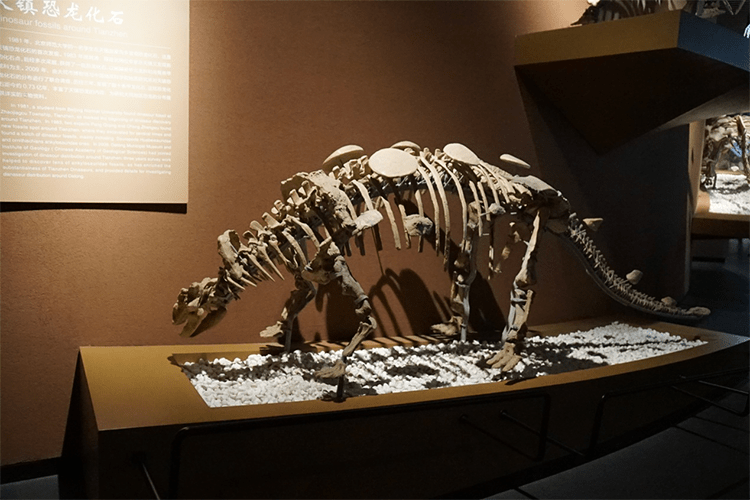Discover Nihewan: Stone Tools in China’s Cradle of Early Humanity
Introduction:
Step through the doors of the Nihewan Museum and time rolls back nearly two million years. Set among the loess gullies of Yangyuan County in Hebei, the building itself pays poetic tribute to the ancient earth. Here, rough stone tools, patched animal fossils and stacked cultural strata lead you into a grand narrative of human origins. Known in archaeology as the “cradle of Eastern humanity,” Nihewan awaits your footsteps to measure the dawn of civilization.
1. Why the Nihewan Museum is unique
The Nihewan Museum is China’s only museum centered on a cluster of Paleolithic sites — an underground library of East Asian human evolution. Unlike dynasty-driven history museums, it tells the earliest chapter of human life with cold stone implements, warm hearth remains and mammoth bones. The museum’s prized objects are not gold or jade, but ordinary-looking stone tools that have rewritten Asia’s migration story.
The building is the first exhibit: its exterior resembles wind-carved loess cliffs, and the undulating curves are inspired by the geological profiles of the Nihewan Basin. Approaching the museum feels like entering a giant archaeological trench — an architectural language fused with exhibition theme that previously won a national architecture design award.
2. An immersive journey across millions of years
Must-see signature artifacts:
– Xiaochangliang campsite panorama (about 13,600 years ago): a 1:1 reconstruction shows how prehistoric people used quartzite to craft scrapers for processing hides. The firelight details bring their daily life dramatically to life.
– Maquangou cultural-layers cross-section (about 1.6 million years ago): the exposed 12-meter geological wall reads like a giant open book. Embedded within its colored layers are cores and burnt bone — direct, visible evidence of sustained early human activity.
– Mammoth tusk fossil (2.3 meters long): displayed beside stone chopping tools believed used in hunts, this Ice Age giant silently tells a story of life-and-death encounters between humans and megafauna.
Exhibition design highlights:
The permanent exhibition is arranged as a “time corridor”: you move from a dark cave-like entrance toward a brighter modern gallery, symbolizing the evolution of human cognition. Interactive zones let you touch replication stone tools and try knapping techniques; AR devices digitally resurrect extinct woolly rhinoceroses on display platforms. The most memorable experience is the 360-degree immersive theater “primitive village under the stars,” which restores the sight of ancient humans gazing at the Milky Way.

3. Practical visiting guide
Recommended routes:
– Quick tour (1 hour): introductory film → Xiaochangliang panorama → Maquangou cross-section → mammoth hall (family-friendly).
– Deep dive (3 hours): add stone-tool workshop, academic screening room, and temporary exhibitions (best for archaeology enthusiasts).
Local insider tips:
– After 3:00 PM, slanted sunlight illuminates the geological cross-section beautifully — prime time for photographing layered strata.
– The northwest corner of the second floor houses a microscopic observation bench rarely visited; under microscopes you can see wear patterns on stone tools.
– Volunteer archaeology talks are held Wednesday mornings, where experts share the latest research findings.
Facilities:
– English audio guides: RMB 20 (deposit RMB 200), including a children’s version.
– Free Wi‑Fi throughout the museum; rest areas provide hot water and local dried apricots from Yangyuan.
– Accessible elevator to all floors; wheelchairs available free at the service desk.
4. Nearby cultural stops to complete the picture
Combine the museum with these nearby sites for a one-day “human origins discovery” trip:
– Nihewan National Archaeological Park (15-minute drive): walk the actual cultural layers.
– Yangyuan Fur and Leather Culture Museum (in the county): jump forward in time from Stone Age to the more recent fur-and-silk trade history.
– Sanggan River Canyon (30-minute drive): hike in landscapes where early humans once foraged and hunted.

Conclusion:
When modern visitors look at Nihewan’s stone tools, they are seeking genetic memory codes embedded in our past. The museum’s greatness lies not only in preserving ancient tools, but in helping us redefine “homeland” — not as a place on your ID, but as the land where our ancestors first raised a stone axe and stared up at the stars. Add Nihewan to your North China itinerary — no place is more worth visiting than the “homeland.”
Practical facts
Address: Intersection of Changsheng West Street and Fuyuan Street, Yangyuan County, Zhangjiakou, Hebei Province
Opening hours: 9:00–17:00 (last entry 16:30), closed Mondays
Admission: Free (ID required for ticket); temporary exhibitions charged (RMB 30)
Transport: High-speed train from Beijing North to Yangyuan Station (about 1.5 hours), then a 10-minute taxi to the museum


